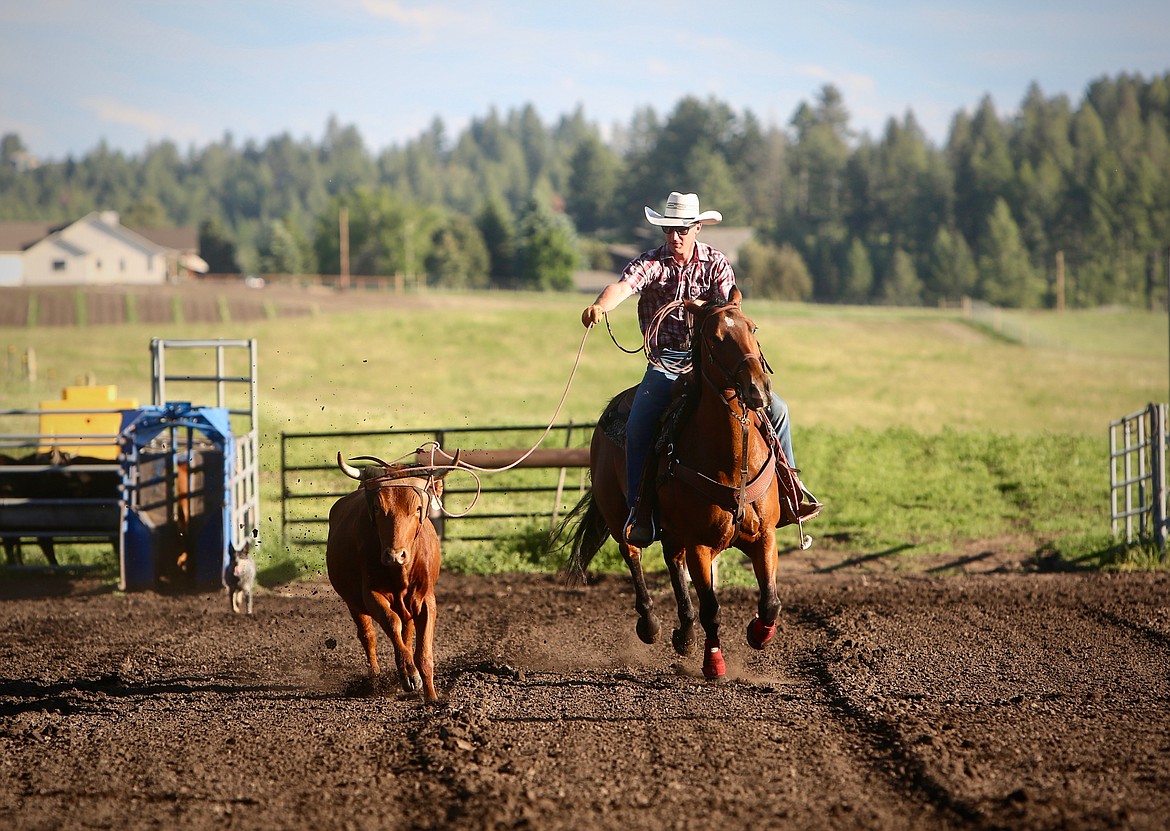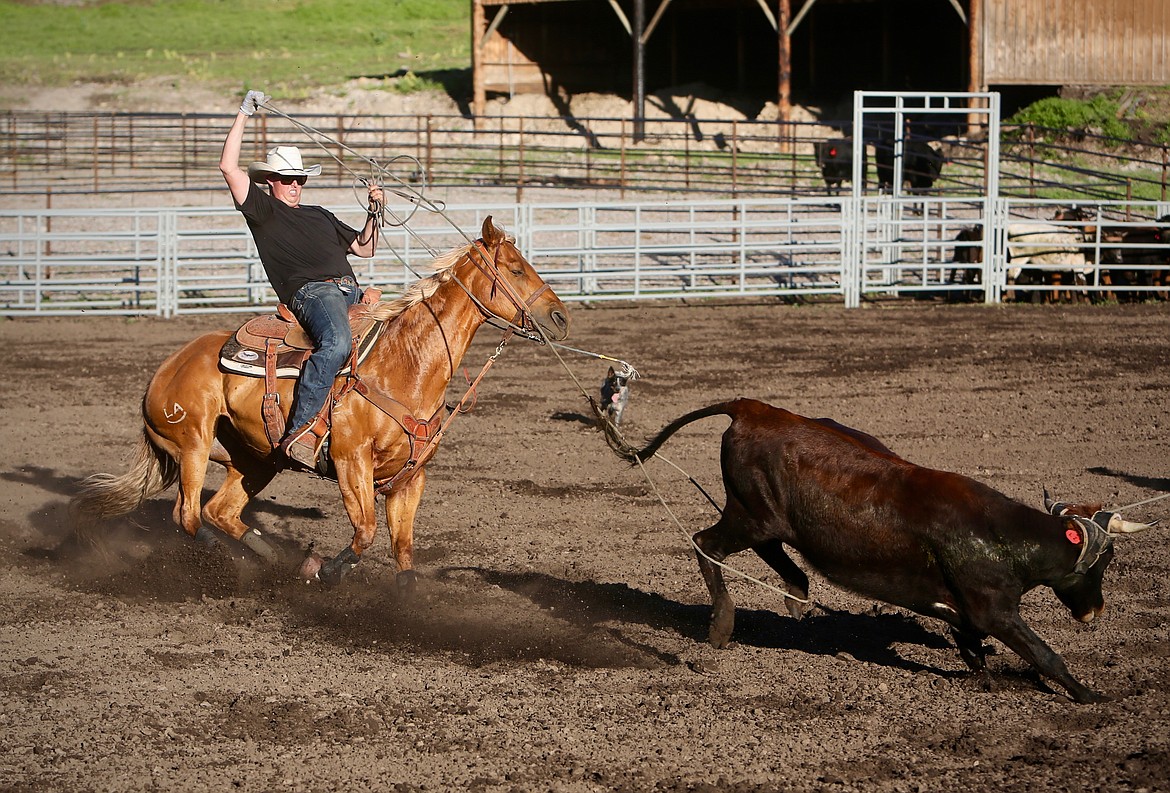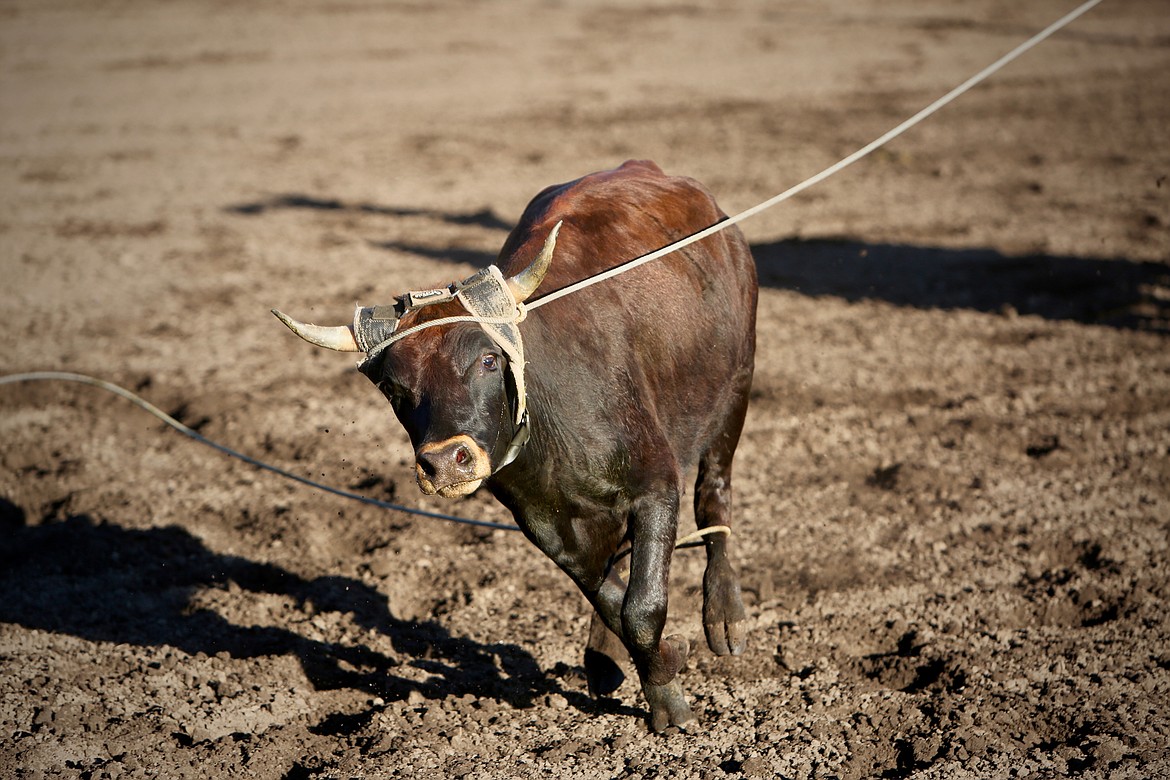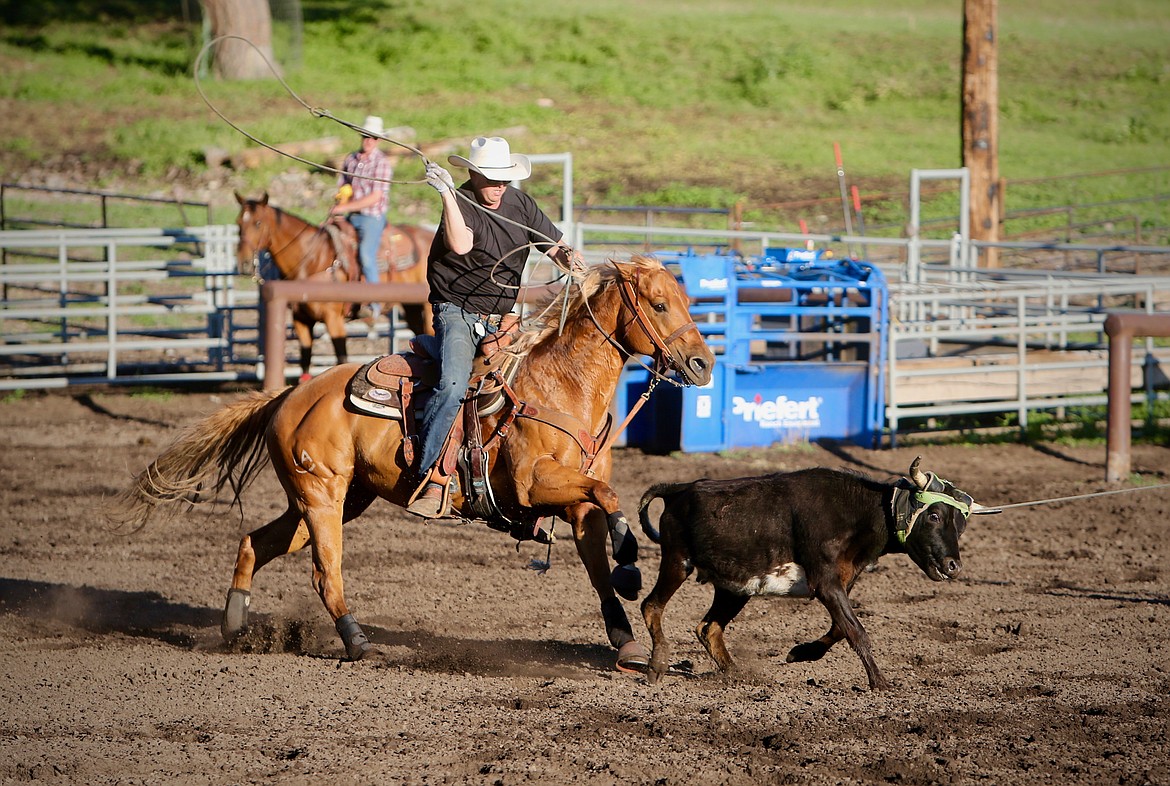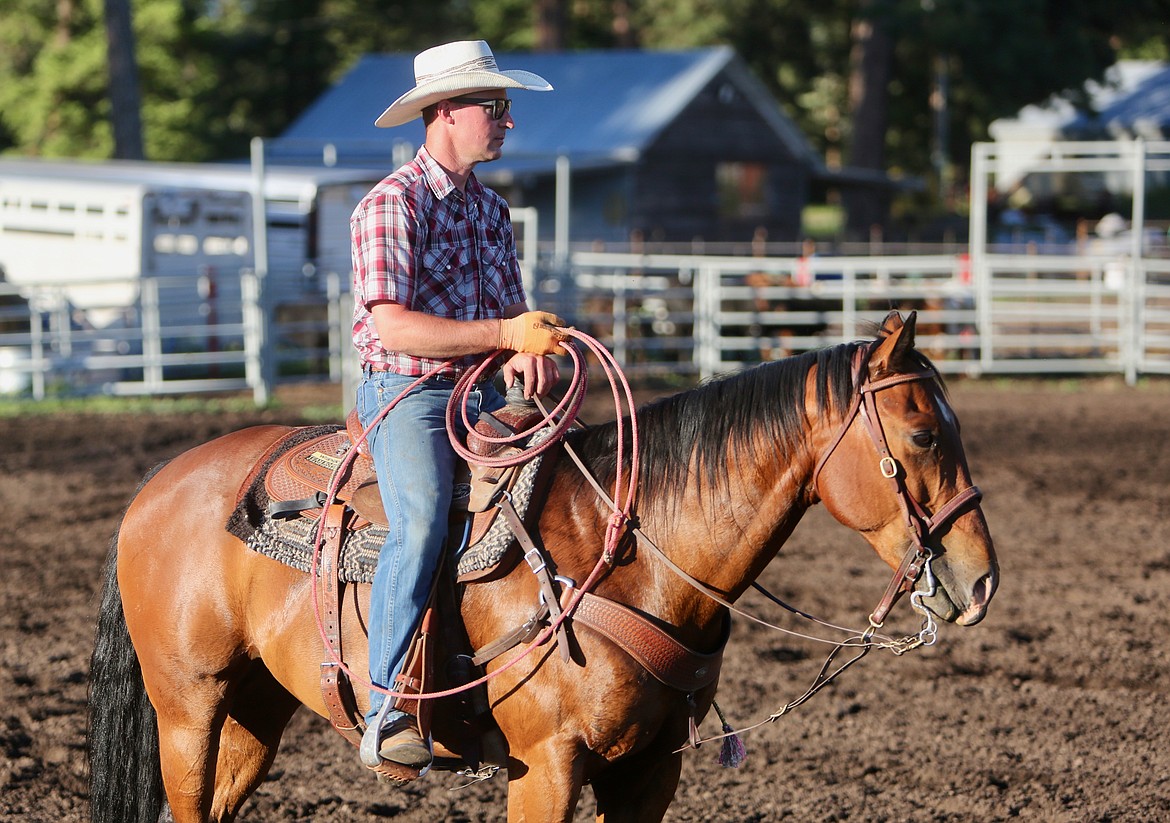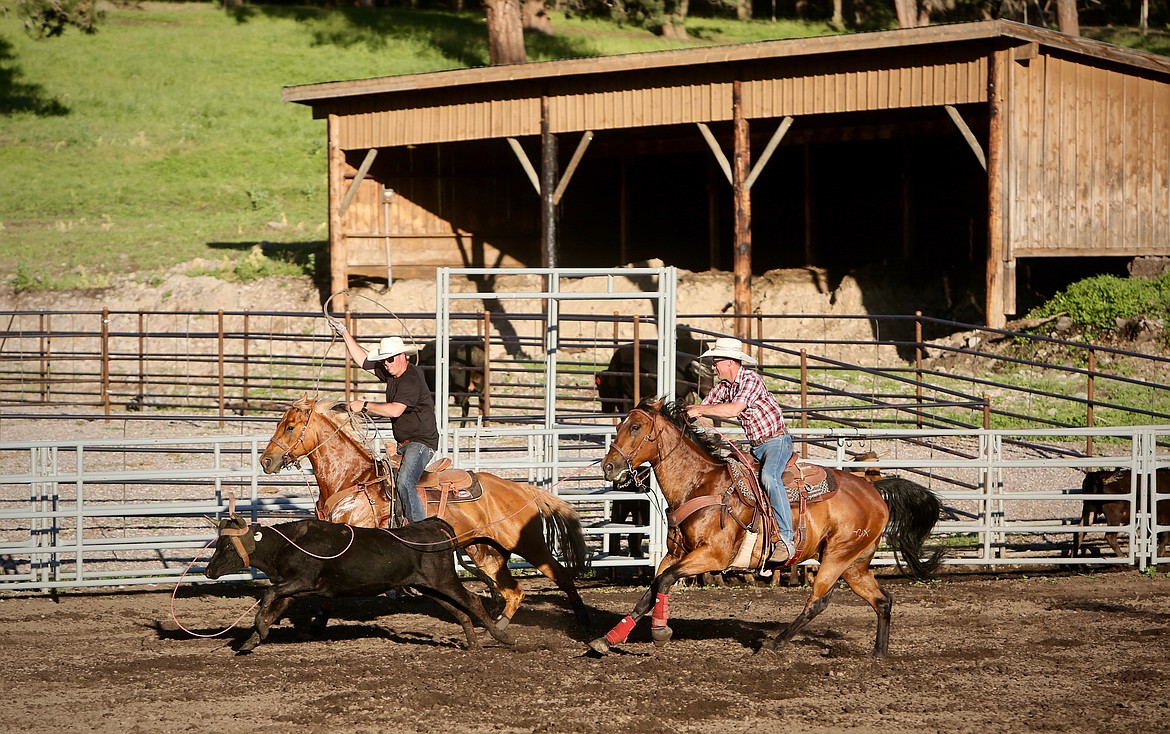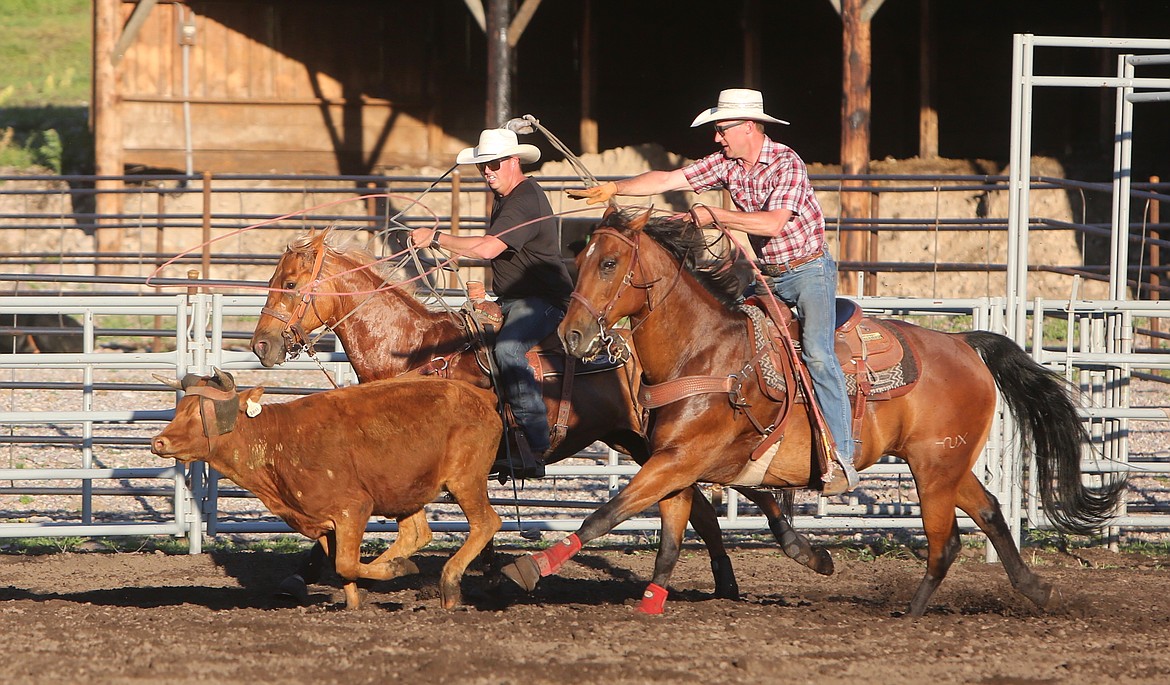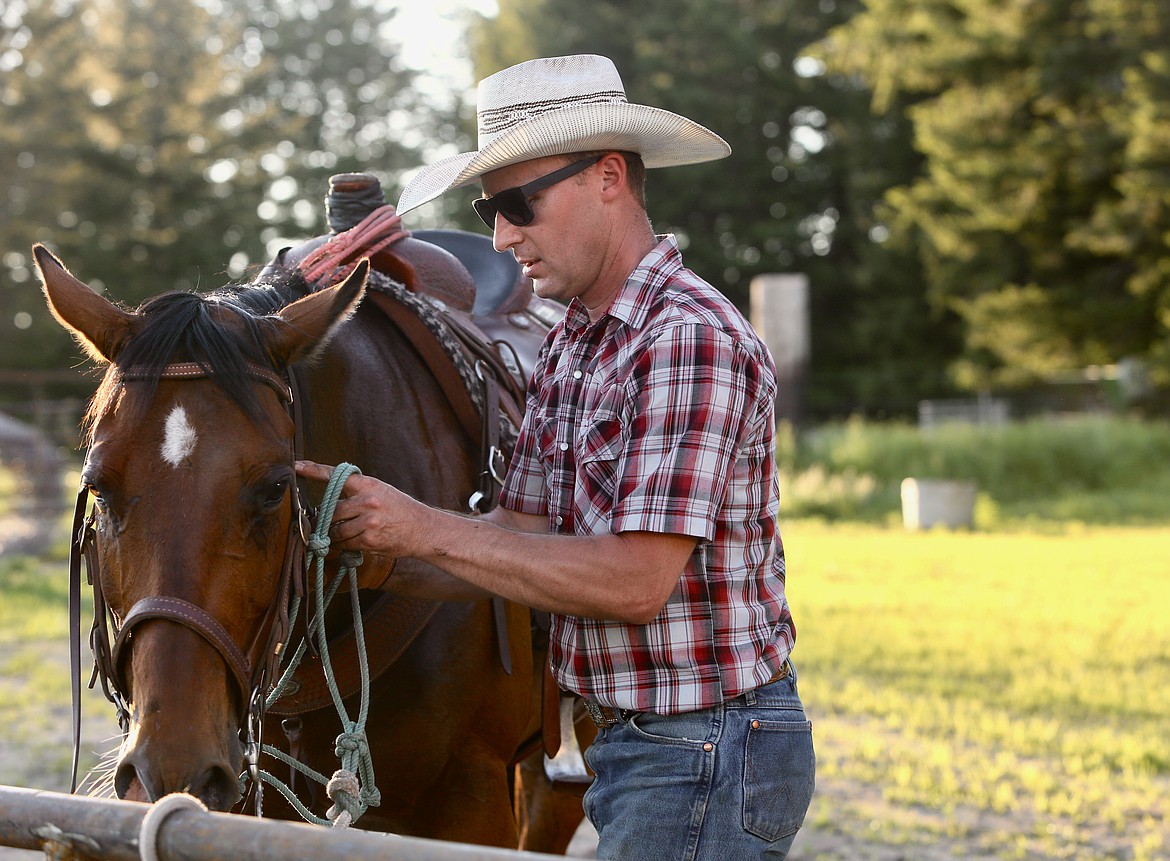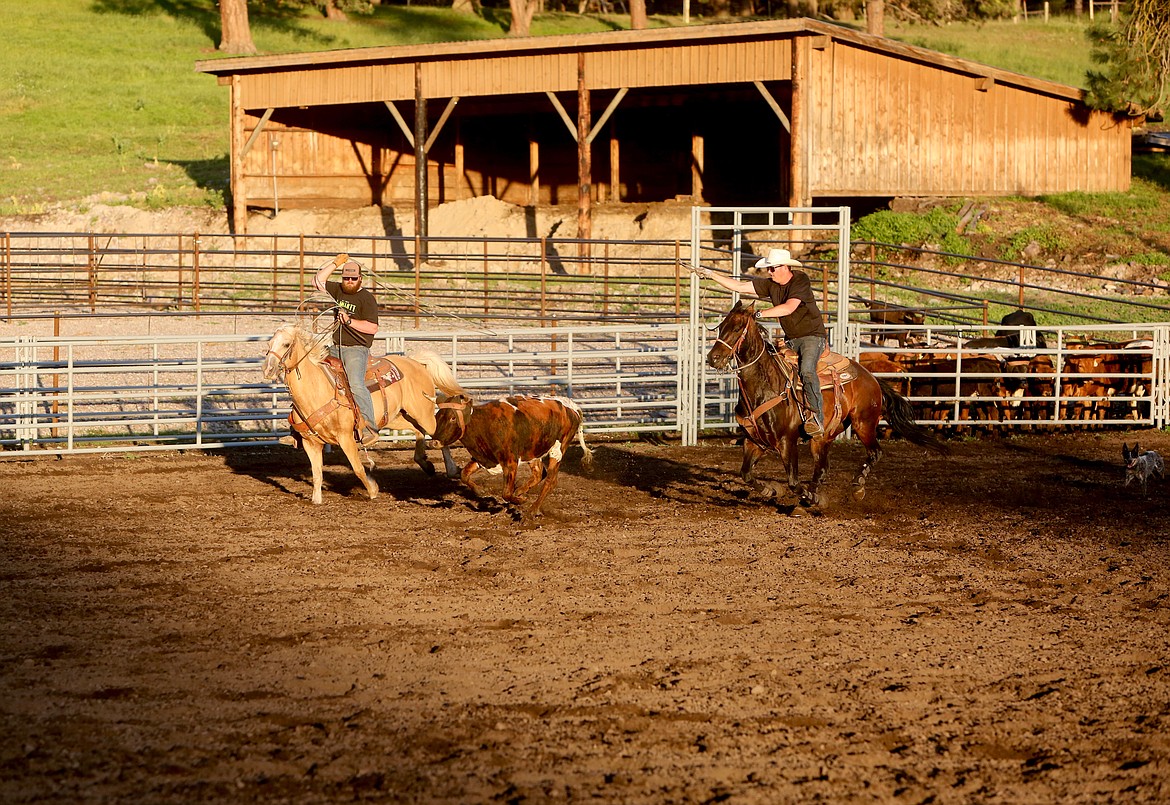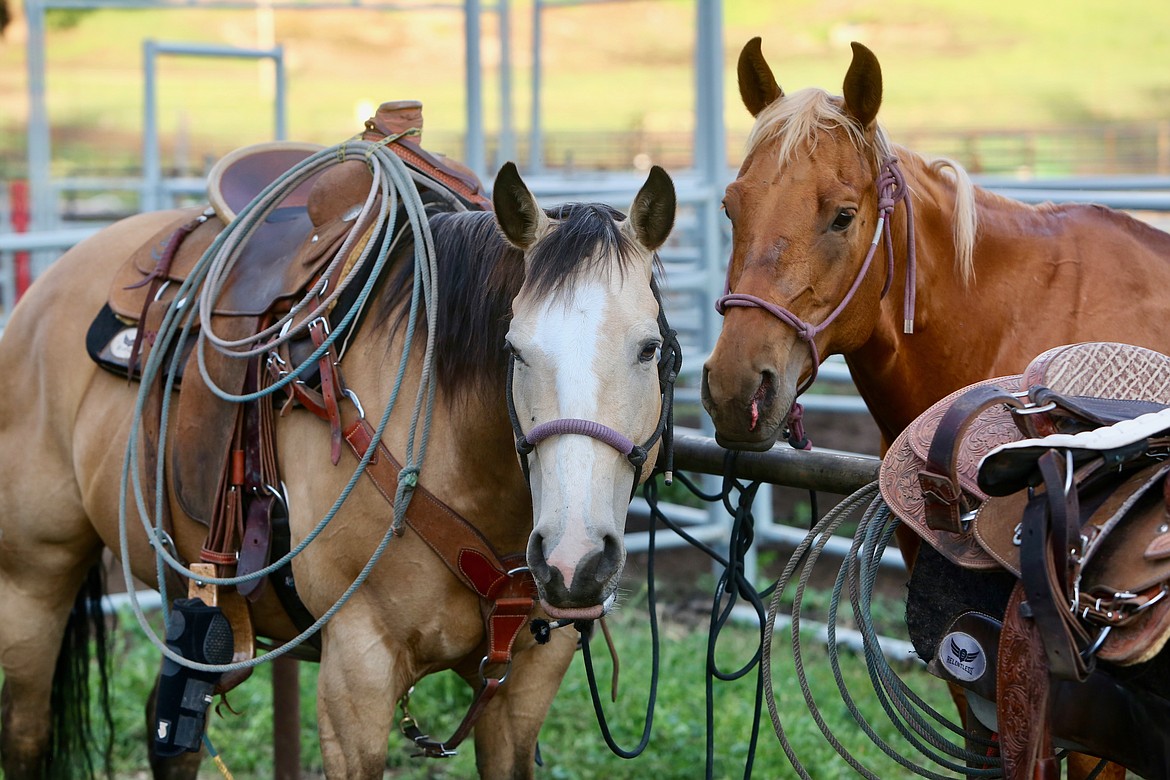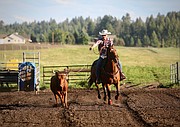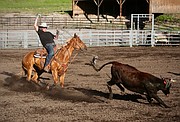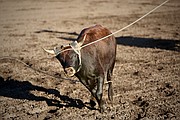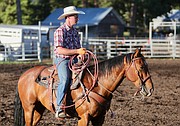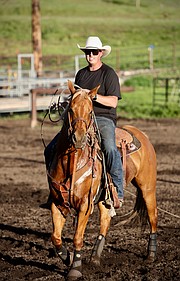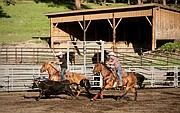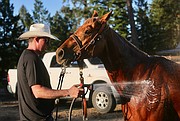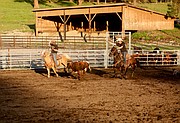Hometown cowboys prepare to compete at Bigfork Summer Pro Rodeo
The russet-colored steer shot out of the shoot like a criminal on the run, kicking up a trail of dirt as it fled down the arena at Ranger Springs. Hot on its heels were riders Laine Averill and Steve Bodick. Bodick threw a rope at the calf’s head, deftly encircling its horns and Averill’s rope followed in quick succession, successfully snatching its hind legs.
Realizing at once that it had been apprehended, the calf’s eyes grew big as the ropes tightened and it toppled to the ground. The whole ordeal transpired in a matter of seconds. The two horse and rider pairs had successfully completed their jobs -- adjusting their movements in step with the calf and with each other to bring the racing steer to a halt. And just as quickly as they’d captured the animal, they set him free and turned their sights on the next steer ready and waiting in the chute. It was just another evening of team roping practice for Averill and his fellow riders who braved an unrelenting summer sun to get in some quality saddle time before next month’s hometown rodeo. The Bigfork Summer Pro Rodeo returns to the Bigfork Rodeo Grounds on July 5-7 beginning at 7 p.m. each night. The rodeo action continues later in the month with a special evening bull riding event, Montana’s Toughest Cowboy, on July 31.
Averill has been riding nearly all his life. And growing up in a third generation ranching family, he could hardly escape it. Both his father Doug Averill and uncle Darv Averill were named to the Montana Pro Rodeo Hall and Wall of Fame and the family operates the historic guest ranch, Flathead Lake Lodge.
“It’s probably in the blood, is the easiest way to put it,” Averill explained, while tacking up his horse for the evening’s practice. “I never knew much different.”
There’s a picture to prove it where Averill can be seen sitting atop a horse at the tender age of 2 with bare feet, his cowboy boots having fallen off during the ride.
Now he rides an average of five to six nights per week leading up to the summer rodeo season which kicks off mid-June and runs through Labor Day. He’ll hit the road, competing at around 20 events per season, mostly in Montana and neighboring states. For Averill, rodeo is about two things: the rodeo community and seeing his hard work pay off.
“Really, the reason I do it is I enjoy making the horses,” he said. “I want to go see the horses that I raise perform. I want to see myself be on the same page with them.”
Take his seven-year-old mare, Sugar Spun Two, for example, who he spent four years training before her first small rodeo. It’s a huge investment of time, patience and money.
“It’s a waiting game and it’s a lot of hours of riding,” he noted.
But when things go well, when that trust is established and they communicate seamlessly to get the job done, it’s all worthwhile.
“I want [my horse] to enjoy what they’re doing so that when I go to rope, I can just rope and my horse is going to know its job and do it … If they do that, it makes my job easy. If I have to fight a horse then it’s really hard to rope,” he explained.
Team roping is a fast-paced and finely tuned event where it can either go like clockwork or horribly wrong in a few seconds flat. Each team consists of two riders -- the header who is responsible for lassoing the steer’s head, and the heeler, who catches the hind legs.
There are three legal ways for a rider to catch the head — around both horns, half head or around the neck. The header throws their rope first with the heeler close behind, cinching the steer’s legs before both parties come to a stop and pull the ropes tight. Averill said that while the heeler’s task may seem more difficult, it’s the header who has the harder job.
“Not enough credit gets given to those guys — the heeler usually gets the glory and that’s not really fair,” he said.
The goal is for the duo to rope the steer as quickly as possible and ideally make it into the running for cash prizes.
“Last year to be in the money chute you had to be probably under 5-and-a-half seconds in any rodeo. This year might be similar. Just depends on COVID shutdowns and limitations with rodeos,” Averill said, noting that turnout at 2020 Montana events was high, likely due to other events being called off in nearby states like Washington and Oregon.
“It’s satisfying and it’s exciting when you tie one down in the rodeo and you come tight — especially if you’re dirty fast. If you’re in the fours in a rodeo … it’s something to be proud of. It takes a lot of work to get to a point to be able to do that,” he said.
And the pressure will be on to get it right in front of his hometown crowd at the Bigfork Summer Pro Rodeo. He said there’s added pressure to do well in front of friends and family — but also an extra layer of fun.
“Your goal is always to go out there and do the best you can,” Averill said. “We always joke that it’s not if you miss, it’s how good you look when you miss because it’s just a part of it.”
Win or lose, the rodeo community will be there cheering in the wings.
“The cool thing about it is if you make a good run, they’re going to celebrate with you . You’re competing against one another, but there’s a lot of friendship involved in it,” Averill said. “People think of a cowboy as a hat and jeans and a pearl-snap shirt with some boots and really it’s so much more than that. It’s really not about what you’re wearing — it’s about how you’re treating the people around you.”



